What is Leverage in Forex?
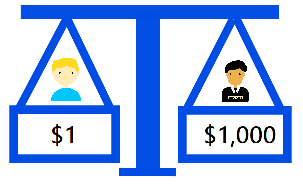
Leverage is when your broker borrows you funds to trade with. This loan enables you to open bigger trades than your account balance would have allowed.
Leverage is expressed as a ratio like 1:30, 1:200, 1:1000 etc.
If you wanted to open a trade valued at $100,000 & your broker offered you a 1:1000 leverage, you would only need to have 1/1000 of $100,000 in your account while the broker borrows you the balance.
The implication is that with $100 in your trading account, your broker will allow you open a trade valued at $100,000.
Advantage of Leverage in Forex
The advantage of leverage is that it multiples your profit, so a 1:1000 leverage will multiply your profit by 1,000 times.
Disadvantage of Leverage in Forex
Leverage is like a double-edged sword because just as it multiplies your profits, it can also multiply your losses. A 1:1000 leverage will multiply your losses by 1,000 times.
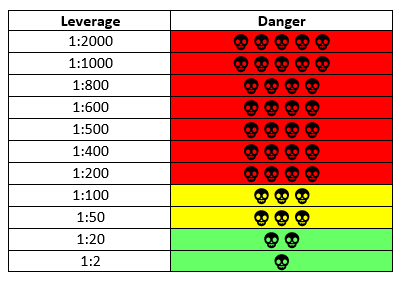
When trading with leverage, you are charged an overnight holding fee (interest on the loan) for leaving trades open till the next day. This overnight fee is tripled on Fridays due to the incoming weekend.
The higher the leverage you use, the more significant your overnight holding cost will be.
What is the Best Leverage to use in Forex
The best leverage for a beginner is between 1:2 and 1:100. This will help the beginner limit losses.
However, if you are an experienced trader, you can use higher leverage than 1:100.
While using leverage you must manage your risk smartly by using Stop Loss (SL) Orders which automatically close your trade when losses reach your specified Stop Price.
You can manually adjust your stop loss by shifting it upwards/downward as your trade enters profit, so you secure any profits.
Some forex trading platforms like MT5 provide Trailing Stop Loss which automatically adjusts your stop loss to secure profits.
What is Account Balance in Forex?
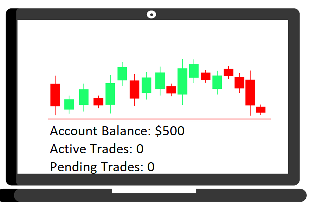
Your account balance is the total money you have in your trading account when you don’t have any open or active trades.
The best account balance to start trading forex with is around $100 because this will give your active trades enough time to mature to profitability without you being stopped out due to losses.
Remember, the market can remain irrational for longer than you can remain solvent.
What is Equity in Forex?
Equity is your account balance plus or minus any floating profit/loss you have sustained from an active/ongoing trade.
The higher your losses, the lower your equity falls.
While trading, always keep an eye on your equity & when you are not trading, keep an eye on your account balance.
What is Margin in Forex?
Margin is how much money you must set aside while your broker borrows you the balance when you are trading with leverage.
The margin is released to you if your trade ends in a profit.
Margin is the inverse of leverage & is expressed as a percentage Margin Formula = 1/Leverage. If leverage is 1:30; then the margin will be (1/30) x 100 = 3.33%.
If your account balance is low & you try to open a trade, you will usually get the error message ”insufficient margin”.
When you get the insufficient margin error message, you could either select a smaller lot size, or deposit more funds into your trading account.
Example of how to calculate margin:
If you want to trade EUR/USD worth $106,200 using 1: 30 leverage, the required margin will be 3.33% of $106, 200 = $3,504
What is Used Margin in Forex?

Before you open a trade, your broker tells you how much margin you need to deposit as collateral. However, once you open the trade the margin becomes used & is deducted from your account & locked up as collateral.
It is the locked-up margin that is referred to as used margin because now the trade has been activated, so the margin serves as collateral.
- Before the trade is opened it is called margin
- After the trade is opened it is called used margin
Whenever the collateral becomes overly depleted due to your losing trades, or market volatility, you receive a margin call to replenish it by depositing additional funds.
The value of your used margin increases as you open more trades.
What is Free Margin in Forex?
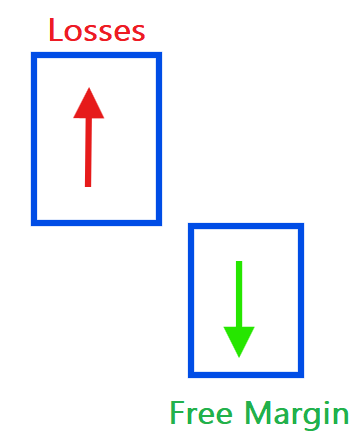
Also known as unused margin, free margin refers to the money in your trading account that you have not yet assigned to trading.
Free margin is also what is left in your trading account after the used margin has been deducted.
So, if you have $1,000 in your account but you opened a trade worth $400, then your free margin will be $600.
The more losses you make, the more your free margin reduces because your broker uses it to offset any losses.
However, as you make profits, your broker frees up more margin so the value of your free margin increases.
An important point to remember is that if your broker allows you create an online wallet where your deposits are held, the funds in the wallet do not constitute free margin.
It is only the funds you transfer from your online wallet to your trading account that constitute free margin.
What is Margin Level in Forex?
The margin level is a percentage that tells you how much free margin you have left. Your margin level is healthy if it is above 100%.
When your margin level falls to 100%, it means your free margin is finished & your broker must start using your collateral (initial margin that was locked up) to offset any losses you make.
If you keep making losses, the collateral or initial margin becomes depleted & when it drops past the brokers specified stop-out level, all your trades will be forcibly closed.
Forex brokers have different stop-out levels where they close all your trades & stop you out of the market.
For instance, a broker with a 50% stop out level will close all your trades when your collateral (or initial margin) has been depleted by 50%.
How to Calculate Margin Level in Forex
The formula for calculating margin level is:
Margin Level = (Equity / Used Margin) x 100
Let us take an example on how to calculate margin level:
| 🗄️Account balance | 550.55 |
| ✔️Profit | 0 |
| ❌Loss | -20.21 |
| 💸Equity | 530.34 |
| 🔒Used margin | 153.86 |
| 🦅Free margin | 376.48 |
| ⚠️Margin level | 344.69% |
From the table you can see that the equity is lower than the account balance because the trader sustained a loss of $20.21
You can also see a used margin of $153.86 meaning that amount has been locked up as collateral.
Margin Level = (530.34/153.86) x 100 = 344.69%
Keeping an eye on your margin level is important especially when you have more than one open trade.
A healthy margin level should be above 100%, or you risk receiving a margin call.
What is Margin Call in Forex?
A margin call is when your forex broker asks you to deposit more funds into your trading account because your free margin is exhausted, and losses are now eating into the collateral you deposited.
- If you had a $500 account balance & you used $100 to open a trade, the $100 is your collateral & $400 is your free margin.
- If you sustain losses while trading, the $400 is used to offset the losses till the $400 is finished.
- At this point your $100 collateral starts diminishing due to your losses
- A margin call is placed for you to deposit more funds to bring your collateral back to $100.
What happens if you don’t comply with a margin call?
Failure to deposit funds after you get a margin call means your open trades will be closed at the current market price which means they will be closed at a loss.
Risks of High Leverage & Government Restrictions
When a broker offers very high leverage to you, they are also putting themselves at risk because when volatility is high, prices could gap, and customer accounts can go into negative. When this happens, the broker may have to absorb the loss.
During the Covid 19 pandemic period the Australian Securities & Investment Commission (ASIC) reported that over 5,448 retail accounts went into negative of about -$4 million dollars and the brokers had to absorb some of these losses.
You also risk huge losses when using high leverage. For example, using leverage as high as 1:2000 means you are 2,000 times more likely to get stopped out of the market due to losses.
Because of the dangers of excessive leverage to the trader and the forex broker, some countries have restricted the use of leverage and instructed brokers to cap the leverage offered on CFDs, to a specific ratio.
How to Manage Leverage Risk
Without leverage there would be no margin call. However, forex trading is designed to function with leverage so you cannot trade without using leverage.
You can manage your risk by selecting a lower leverage when opening your trading account.
Even though some forex brokers offer up to 1:2000 leverage, you can always select a lower leverage from 1:2 upwards.
Even after your account has been opened, your broker allows you to edit and change your leverage to a lower one.
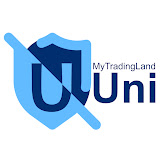
Leave a Reply